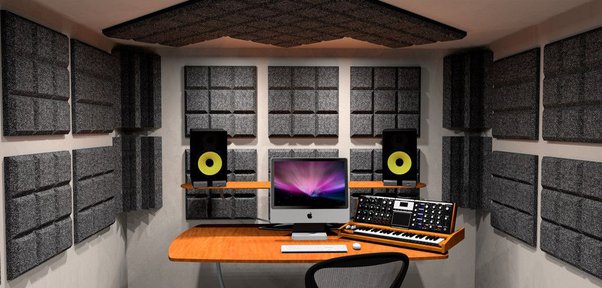Acoustic foam is a specialized type of foam designed to absorb sound waves, thereby reducing reverberation and echoes in enclosed spaces. The acoustic foam material typically features an open-cell structure that allows sound waves to enter and be dissipated through friction and heat conversion.
Challenges of Outdoor Acoustics
Outdoor acoustic foam material are influenced by various factors, including wind, temperature, humidity, and ambient noise. These factors can affect the propagation of sound waves and the effectiveness of sound-absorbing materials like acoustic foam.
Properties of Acoustic Foam Material
Absorption and Reflection
Acoustic foam excels in absorbing sound waves within enclosed spaces, but its effectiveness may vary outdoors due to the lack of boundaries to contain sound. However, strategically placed foam panels can still help mitigate echoes and improve sound clarity in outdoor settings.
Durability
One concern with using acoustic foam outdoors is its durability in harsh environmental conditions. Exposure to sunlight, moisture, and temperature fluctuations can degrade foam material over time, reducing its effectiveness.
Weather Resistance
Some acoustic foam products are specifically designed to withstand outdoor conditions, featuring UV-resistant coatings and water-resistant properties. However, proper maintenance and periodic inspection are essential to ensure longevity and performance.
Considerations for Using Acoustic Foam Material Outdoors
Environmental Factors
Before installing acoustic foam outdoors, it’s crucial to assess the environmental conditions of the site, including exposure to sunlight, wind, rain, and temperature fluctuations. Choosing weather-resistant foam materials and proper installation techniques can help mitigate potential damage.
Installation Considerations
Proper installation is key to maximizing the effectiveness of acoustic foam outdoors. Secure mounting methods and appropriate spacing between panels can optimize sound absorption and minimize the risk of damage from environmental factors.
Applications of Acoustic Foam Material in Outdoor Settings
- Outdoor Events and Performances: Temporary installations of acoustic foam panels can help improve sound quality and reduce noise pollution during outdoor concerts, festivals, and events.
- Architectural Design: Incorporating acoustic foam into outdoor structures such as amphitheaters, pavilions, and open-air theaters can enhance acoustics and create more enjoyable environments for gatherings and performances.
Alternatives to Acoustic Foam for Outdoor Use
- Weatherproof Sound Panels: Specialized panels made from weather-resistant materials like fiberglass or aluminum offer durable solutions for outdoor sound management.
- Natural Sound Absorbers: Utilizing natural elements such as vegetation, terrain features, and water bodies can help diffuse sound and reduce noise levels in outdoor environments.
Case Studies and Success Stories
Several projects have successfully implemented acoustic foam in outdoor settings, demonstrating its effectiveness in improving sound quality and enhancing the overall experience for attendees and performers alike.








